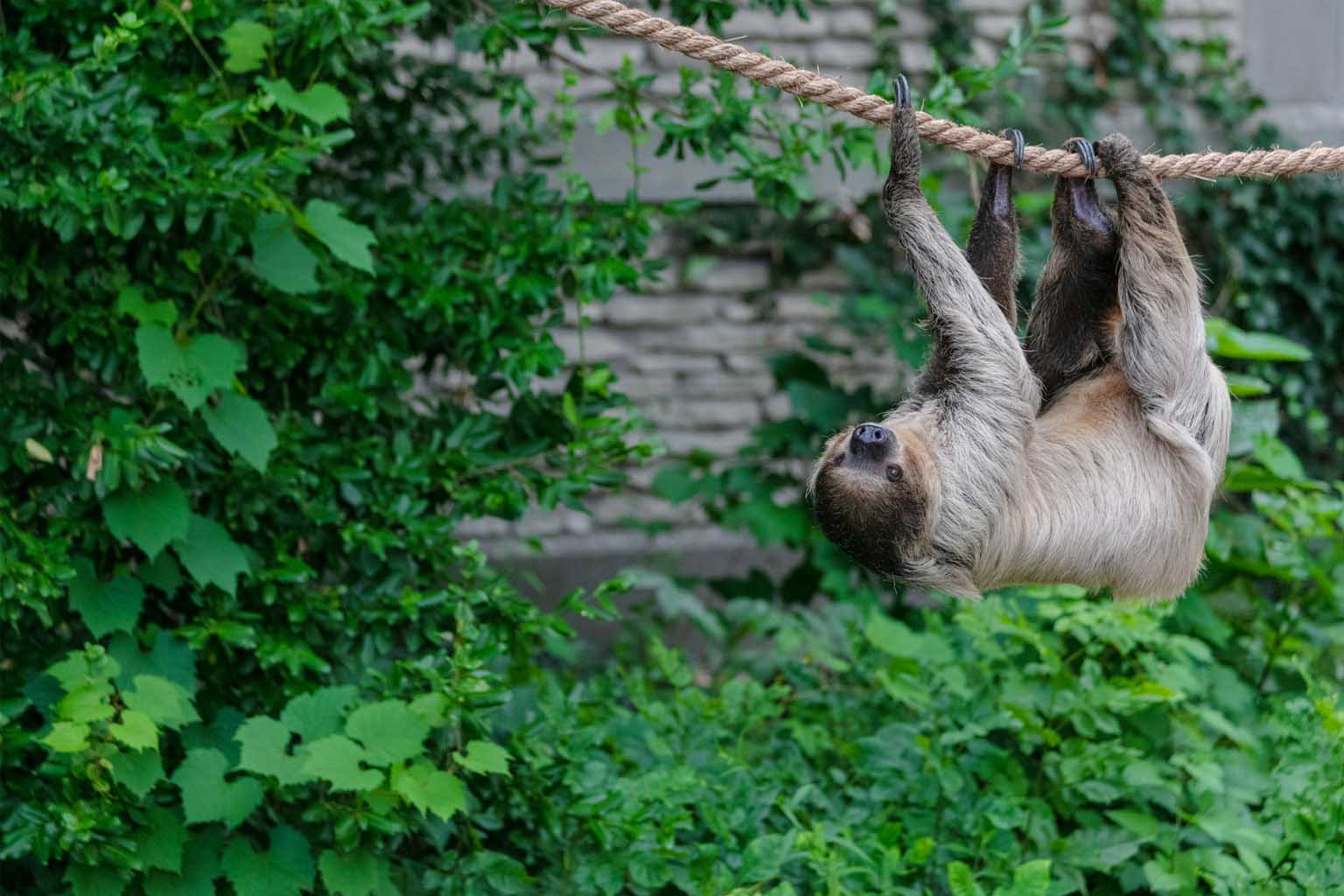Some stories about the past feel almost unbelievable—like discovering that the creatures we think we know were once something entirely different. And when it comes to sloths, the truth is wilder than fiction. These quiet tree-dwellers once roamed the Americas as towering, ground-shaking giants.
Today, we mostly picture sloths as slow, gentle animals hanging in tropical canopies. But according to new research, their history stretches far beyond the branches, revealing a lost world filled with enormous sloths as tall as elephants and agile climbers no bigger than a housecat.
A forgotten world of sloth diversity
Modern sloths may seem simple, but their evolutionary past was anything but. Scientists now know that for millions of years, sloths came in a breathtaking range of shapes and sizes. Some were tiny, swift climbers navigating dense forests. Others were massive ground-dwellers—creatures so large that their height could reach nearly 20 feet, with bodies weighing several tons.
Recent studies highlight how deeply habitat changes shaped this extraordinary diversity. As forests expanded across ancient landscapes, some sloths shrank and adapted to life in the trees. Meanwhile, others remained on the ground, growing larger and developing sturdier frames that helped them survive in open environments.
It’s striking to imagine the Americas once filled with more than a hundred sloth species, each carving out its own ecological niche. Fossils show these animals lived in forests, grasslands, and even semi-arid regions, thriving from North America down to Patagonia. Yet despite this incredible success, nearly all these species vanished at the end of the last Ice Age.
35 million years of evolution revealed
To understand how such a diverse empire of sloths emerged—and eventually disappeared—researcher Alberto Boscaini and his team examined more than 35 million years of sloth evolution. Their work combined fossil evidence, genetic data, and advanced evolutionary modeling, building one of the most detailed reconstructions ever made of this ancient group.
They analyzed 67 genera of extinct and living sloths, uncovering how shifts in diet, climate, and predator pressure influenced their body size and behavior. Their findings show that sloths weren’t simply slow animals adapting to a single lifestyle. Instead, they were dynamic creatures constantly evolving in response to a changing Earth.
According to the team, early sloths were mostly large herbivores roaming on the ground. But as forests grew thicker over millions of years, many lineages transitioned upward—literally—by moving into the trees. This shift dramatically reshaped their bodies, leading to smaller, lighter forms better suited for an arboreal life.
Some sloths even increased in size again later on, likely as a response to climate changes or new ecological opportunities. Their story isn’t a straight line—it zigzags, reflecting the complex rhythm of the world they inhabited.
How habitat shaped giants and climbers
One of the most surprising insights from this research is just how much habitat transformation dictated the fate of different sloth species. When lush forests dominated the landscape, smaller sloths thrived. Their lightweight bodies made it easier to swing between branches and feed on canopy leaves.
But in colder periods or in open environments with fewer trees, different pressures emerged. Larger, sturdier species had the advantage. Their sheer size allowed them to access tough, ground-level vegetation and defend themselves against predators like saber-toothed cats. Some giant sloths were so massive that clearing a fallen tree might have been as effortless for them as brushing aside a branch.
This interplay between habitat and body size helps explain why sloths evolved such incredible extremes. It reminds us that animals are always shaped by the worlds they inhabit—sometimes slowly, sometimes dramatically.
While reading about these ancient giants, I couldn’t help thinking back to a moment from a trip I once took in Costa Rica. I remember watching a tiny three-toed sloth inch along a branch at the forest’s edge. It moved with such careful patience that I stood there for almost twenty minutes, transfixed. At the time, I never imagined its ancestors could have towered over me like prehistoric guardians of the land. That quiet moment now feels connected to something far larger—a reminder of how much of Earth’s history lies hidden beneath the surface.
The human arrival and the end of the giants
For all their impressive adaptations, giant sloths eventually met a devastating turning point. Their extinction happened surprisingly recently—around 15,000 years ago—right when humans first arrived in the Americas. While climate change was once considered a possible cause, the evidence increasingly points to early human hunting as the dominant factor.
Unlike their tree-dwelling relatives, giant sloths lived on open ground, making them far more vulnerable. Their slow movement and large bodies, once evolutionary strengths, turned into dangerous weaknesses. Throughout archaeological sites, researchers have found clear signs of human interaction with giant sloth populations, including butchery marks on bones and tools used in hunting.
Meanwhile, smaller arboreal sloths managed to survive by retreating into forest canopies. Their modest size, tree-based lifestyle, and remote habitats likely helped them avoid the pressures that drove their larger relatives to extinction. Still, even these survivors faced challenges as human activity continued to reshape landscapes.
What do you think—does learning about these lost giants change how you see the sloths we know today ? Have we underestimated the hidden histories of other familiar animals ? Share your thoughts, pass this story along, and join the conversation about the extraordinary past shaping the world we live in.

